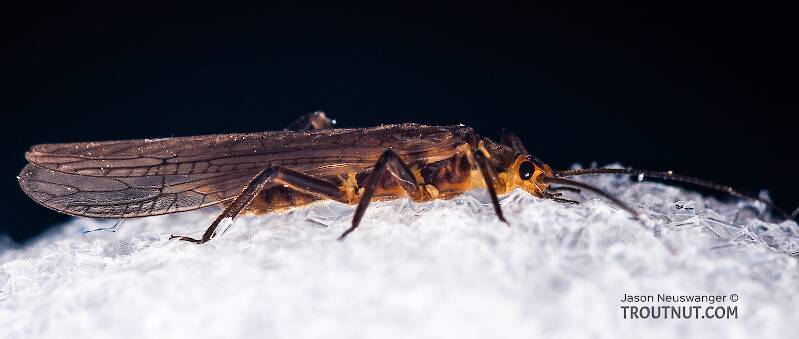
Hex Mayflies
Hexagenia limbata
The famous nocturnal Hex hatch of the Midwest (and a few other lucky locations) stirs to the surface mythically large brown trout that only touch streamers for the rest of the year.
Featured on the forum

This dun emerged from a mature nymph on my desk. Unfortunately its wings didn't perfectly dry out.

Troutnut is a project started in 2003 by salmonid ecologist Jason "Troutnut" Neuswanger to help anglers and
fly tyers unabashedly embrace the entomological side of the sport. Learn more about Troutnut or
support the project for an enhanced experience here.
Common Roachflies
This common name refers to only one species. Click its scientific name to learn more.
Stonefly Species Tallaperla maria
These are very rarely called Common Roachflies.

The adult stoneflies of this family look surprisingly normal given the strange shape of the nymphs. I tried to identify it beyond family level 15 years after collecting it, based on my photos, which are not ideal. It's difficult even to tell the gender for sure because I don't have a good picture of the terminalia, but the body size suggests it's a male, and the species ranges suggest either Peltoperla arcuata or a male Tallaperla maria. One distinctive feature of the original description of this species is that the antennae are paler for a short distance beyond the first two thick, dark segments. That can be seen on this specimen and on a specimen on BugGuide identified as Tallaperla maria.

